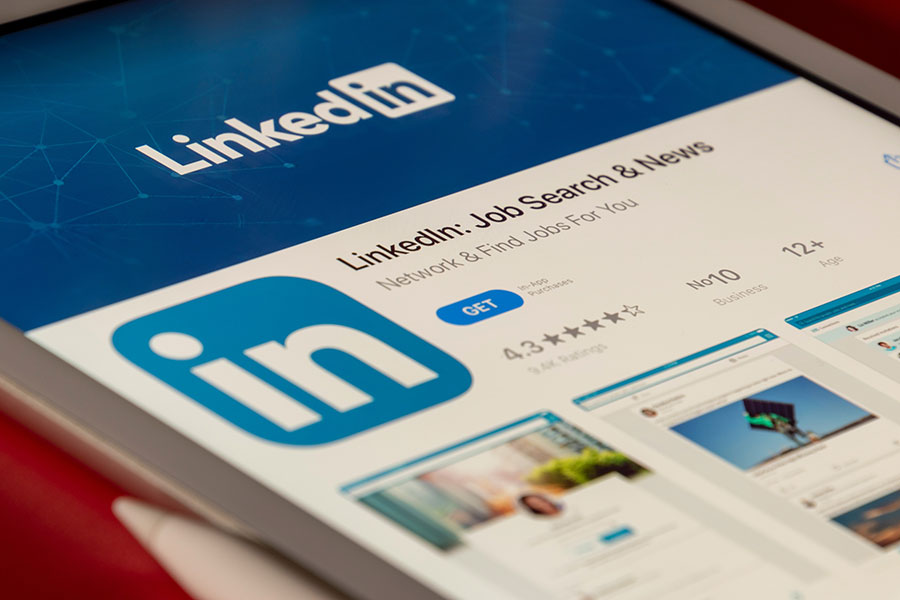LinkedIn is the world’s largest professional network. It’s used by millions of professionals from all industries and fields.
As a developer, you should create a profile on LinkedIn. Why?
Because, whether you are actively looking for a new job or not, LinkedIn can help you stay up-to-date with the latest news in your industry, find new job opportunities, and get noticed by recruiters.
In this article, we will show you how to create a profile that highlights your programming skills and presents you as a reliable programmer to future employers.
Let recruiters know you’re open to work
Setting your LinkedIn profile to “open to work” is the best method to learn which firms are hiring. This is a terrific approach to get your foot in the door if you don’t know where to begin your job hunt.
The #OpenToWork hashtag allows you to decide which potential employers get to know that you’re looking for a new position.
You can choose to share this status with all LinkedIn users — that goes for current and former coworkers alike. The #OpenToWork picture frame is included as well.
Another option is to share it only with LinkedIn Recruiter users. Although this doesn’t guarantee absolute secrecy, LinkedIn tries to keep your current and former employers from viewing your profile through the LinkedIn Recruiter.
Emphasize your experience and skills
Hiring managers and recruiters looking at profiles for software engineers pay close attention to this part, so you should pay particular attention to it as well.
You may highlight the languages you’ve studied or even dabbled in, which is something you might not be able to do on a more conventional resume, in an updated Skills and Experience section.
If you take one thing away from this piece, make it be that your profile’s Skills section needs some updating.
Make use of relevant keywords
Because of LinkedIn’s proprietary search algorithm, which is used by hiring managers and recruiters to find candidates, keywords are quite important.
Emphasize the precise topics you want to work on, such as certain languages and frameworks, to ensure the algorithm brings you to the correct individuals.
Equally important is the elimination of knowledge and tools that you have no desire to employ. Or at least downplay their significance.
Put a personal touch on your profile
Unlike a résumé, your LinkedIn profile may be more casual and conversational. Adding a little bit of character to your profile is always a plus in the eyes of hiring managers and recruiters.
While it’s best to maintain a level of professionalism in your job descriptions, your LinkedIn Summary and Headline are where you may let your hair down a bit.
Keep past job descriptions short
Recruiters and hiring managers want to know about your past experience, but it doesn’t mean you have to write a novel. Specify whatever skills you have been utilizing and give examples from your present position.
Highlight the languages you prefer working in and the extent to which you’ve used each ability; you’ll start receiving more specialized job offers in exchange for the less general ones.
Don’t forget about side projects
It may be argued that no other field places such a premium on workers spending their free time honing their skills. Be specific about the nature of the project and your involvement when adding it to your LinkedIn profile.
Participating in extracurricular projects is a great way to showcase your leadership and engineering abilities to potential employers or clients.
If you would like potential employers to view the code you have contributed in real-time, feel free to provide a link to your GitHub page. This is a great method to express your enthusiasm for engineering and to start a conversation with potential employers on a more casual level.
Organize your connections
The more connections you have, the better you will appear to a hiring manager or recruiter, which may lead to landing more interviews. However, having a large network isn’t worth much if your connections are not properly managed.
So how to keep track of networking contacts? In order not to clutter up your profile, you can arrange your connections by adding them to lists and utilizing LinkedIn tags. Keeping your network tidy will help you make the most out of your connections and build meaningful and personalized relationships.
Share your ideas
It’s possible that posting won’t instantly result in employment offers. However, it is an excellent method of keeping your contacts up to date on your activities. This is a great strategy for expanding your visibility.
You already know how great you are as a developer; the trick is to make that fact known to the world at large. Write articles about your specialty and share your ideas.
Having written articles establishes you as a thought leader and shows future employers and clients that you know your stuff.
Over to you
LinkedIn is a great resource for software developers, and it’s imperative that you take full advantage of it.
Follow these tips and you’ll be sure to take your LinkedIn presence to the next level.
Author Bio
Brenda is a passionate business blogger, tech nerd and gamer. She is interested in topics that cover business communication, sales, online branding, digital marketing and social media, business tools and extensions, as well as organization and management of LinkedIn connections.





